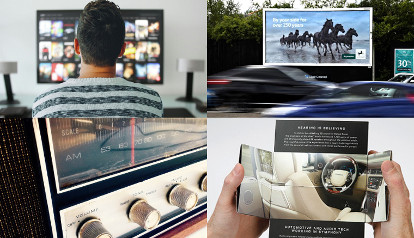 Building and maintaining customer loyalty is proving ever harder for brands – especially in the current economic climate – but while marketers talk up new tech solutions it has emerged that those who ignore the power of traditional media risk alienating huge swathes of their customers.
Building and maintaining customer loyalty is proving ever harder for brands – especially in the current economic climate – but while marketers talk up new tech solutions it has emerged that those who ignore the power of traditional media risk alienating huge swathes of their customers.
So says the SAP Emarsys Customer Loyalty Index, which quizzed more than 2,000 UK consumers, and found the vast majority (83%) of those who remain loyal still feel undervalued.
According to the study there are diverse motivations for brand loyalty, with 40% of consumers crediting it to long-standing reputations, 30% to brand consistency and 22% to iconic branding. However, fewer than two in ten (17%) feel “truly valued”, leaving the majority wanting more.
The study maintains this disconnect should be a wake-up call for brands, as customer acquisition costs continue to rise. Research shows it costs up to five times more to acquire a new customer than to retain an existing one.
SAP Emarsys maintains that brands can identify and engage diverse audiences by embracing AI tools, meeting customers where they are with tailored, real-time experiences across every channel, but, when it comes to customer communication, an over-reliance on digital channels could be foolhardy.
While email and mobile marketing are the preferred channels (at 69% and 53% respectively), traditional media remains crucial, with direct mail (48%), advertising (39%) and print (38%) having huge traction and and still more popular than web push messaging (26%).
In terms of individual sectors, the analysis reveals distinct patterns in loyalty among consumer packaged goods shoppers compared to the others.
CPG shoppers place a higher value especially on product quality (63%), and brand longevity (46%), and they are more engaged in demonstrating their loyalty through frequent shopping (67%), recommendations (52%), loyalty programmes (48%) and mobile app usage (46%).
They also have specific expectations in return for their loyalty, including reduced prices (61%), rewards such as loyalty points and cashback (55%), and free returns (45%).
Meanwhile, for luxury shoppers, quality is king. At a time when many brands are cutting product quality to reduce costs, luxury brands cannot afford to make the same mistake, with 60% of luxury buyers saying a drop in quality would negatively impact their loyalty.
Consumers also expect a higher level of service from luxury brands. When compared to non-luxury brands, a single bad customer service experience is 24% more likely to impact loyalty.
The report concludes bu highlighting a number of key strategies to keep customers onboard, including focusing on personalisation; creating memorable experiences; prioritising product quality and pricing; encouraging active engagement; and offering incentives and rewards.
SAP Emarsys chief marketing officer Sara Richter said: “Customer loyalty is the holy grail of marketers. From repeat purchases to average order value, and customer lifetime value, loyalty can have a significant impact on brands’ business objectives.
“But today, the nature of loyalty is changing. These days, technology makes it easier for customers to discover a wide array of alternatives and compare prices across different platforms, reducing the friction involved in changing preferences.
“As the process for switching brands is streamlined, brands must ask themselves, what does loyalty look like from the customer perspective? What do today’s customers think and feel about loyalty? And what does it take to earn and secure their long-term loyalty?”
Related stories
AA/WARC Report reaction: ‘Beware digital saturation’
Direct marketing shines again as spring brings recovery
Spooner on…a love letter to the humble direct mailshot
Direct marketing hits 20-year high in upbeat Bellwether
Deluge of emails sees Brits long for return of direct mail




Be the first to comment on "Loyalty marketers warned not to ditch traditional media"